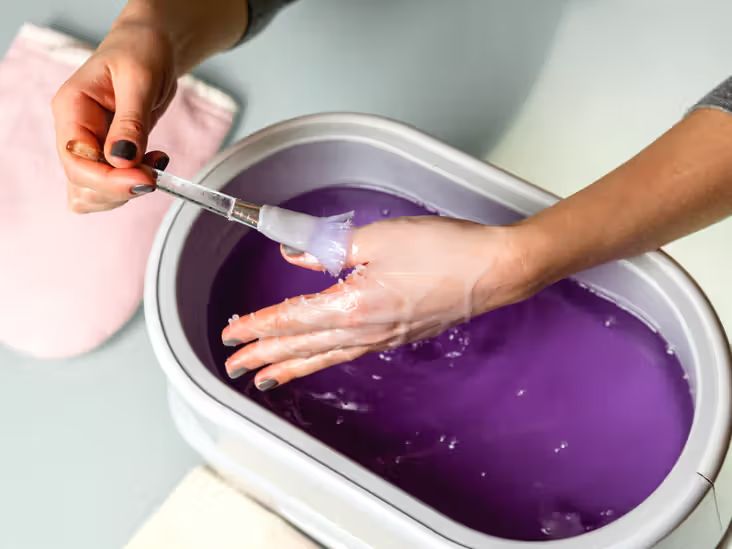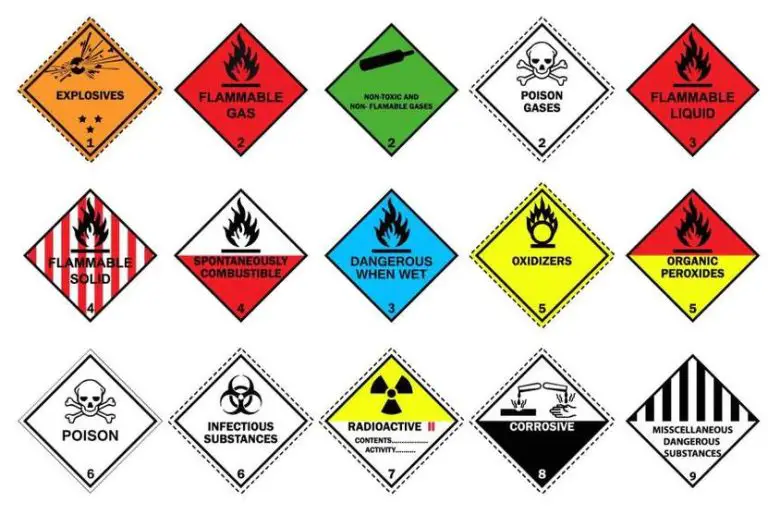Is Household Paraffin Wax Food Safe?
What is paraffin wax?
Paraffin wax is a soft, colorless solid derived from petroleum, coal or oil shale that consists of a mixture of hydrocarbon molecules containing between twenty and forty carbon atoms. It is solid at room temperature and begins to melt above approximately 37°C (99°F). It is odorless and tasteless.
Paraffin wax is extracted during the refining of crude oil. It is commonly used to help soften skin in products like lotions, cosmetics, and wax baths. It is also found in candles, polishes, and sealants. In the home, paraffin wax can be used for sealing jars, shining furniture, lubricating drawers, protecting wood surfaces, making crafts like candles, and more.
Is paraffin wax safe for food?
Paraffin wax is generally considered safe and non-toxic when used in typical applications like candle making. However, there are some safety concerns around ingesting paraffin wax, especially in large quantities.
According to the Mount Sinai Health Library, ingesting paraffin wax can cause a condition called “paraffin poisoning” (source). Symptoms can include vomiting, diarrhea, ulceration of the GI tract, breathing problems, and even death. Children may be at higher risk since they are more likely to ingest paraffin wax from eating crayons or chewing on candles.
One study on rats found that ingesting paraffin wax daily for 90 days caused significant health effects (source). Effects included decreased body weight, ulceration of the stomach, kidney inflammation, and changes in organ weights. The study authors concluded that paraffin wax can be toxic if swallowed, especially with repeated exposure.
Overall, paraffin wax should not be ingested, especially in large amounts. Accidentally swallowing a small amount will likely not cause major health issues. But ingesting paraffin wax on a regular basis may lead to symptoms of paraffin poisoning. Using paraffin wax safely by avoiding ingestion is important.
FDA Regulations
The FDA has approved certain types of paraffin wax for use in or on food under specific regulations. According to 21 CFR 175.250, synthetic paraffin may be safely used as a coating on articles used in food production and packaging if it meets certain requirements.
Another regulation, 21 CFR 172.886, states that petroleum wax may be safely used in or on food if it meets purity specifications. However, the FDA requires that petroleum wax used in or on food must be highly refined and meet standards for acceptable levels of impurities.
Overall, the FDA has approved food-grade paraffin wax for direct and indirect food contact, but there are restrictions around the refining processes and impurity levels allowed. The FDA regulations aim to ensure any paraffin wax used with food is highly purified and free from hazardous contaminants.
Alternatives to paraffin wax
There are several natural alternatives to paraffin wax that can be used for food purposes:
One of the most common substitutes is beeswax. Beeswax is made from honeycomb produced by honey bees. It has a pleasant honey-like scent and is considered safe for food use. Beeswax is a good option for candy making, cake decorating, and coating baked goods (America’s Restaurant).
Soy wax is another alternative made from hydrogenated soybean oil. It’s vegan, biodegradable, and burns cleaner than paraffin. Soy wax works well for chocolate making, candy apples, and cheese coatings (eHow).
Other natural waxes like carnauba and candelilla wax can also substitute paraffin wax. These plant-based waxes create a nice sheen and protective coating for baked goods and confections (Frugal Village).
Overall, beeswax, soy wax, and other plant-based waxes offer natural, food-safe alternatives to paraffin wax.
Using paraffin wax on food surfaces
Paraffin wax is commonly used to coat various food packaging materials like paper, cardboard, and aluminum foil. The wax provides a protective barrier that prevents moisture loss, extends shelf life, and improves the appearance of packaged foods (Food Packaging Forum, 2022).
According to the U.S. Food and Drug Administration (FDA), paraffin waxes are generally recognized as safe for direct contact with food when used in accordance with Current Good Manufacturing Practice (CGMP) (FDA, 2022). This means paraffin wax coatings are considered safe for touching foods as long as proper manufacturing and safety protocols are followed.
However, there are concerns about the potential for paraffin wax to migrate from packaging into food. Paraffin waxes contain hydrocarbons that can leach into fatty and oily foods over time. Studies show migration occurs more readily at higher temperatures. Proper refinement and processing is needed to produce food-grade paraffin wax with minimal impurities and volatility. Reputable manufacturers follow strict standards to ensure low migration risk (Lambré, 2023).
Overall, paraffin wax coatings are deemed safe by regulatory agencies when produced under proper conditions. But some potential exists for migration of compounds into food, especially with prolonged storage. Minimizing exposure time and temperature can help reduce this risk.
Paraffin Wax Allergy Risk
Although quite rare, some people can develop an allergic reaction to paraffin wax. This is more likely in individuals who already suffer from sensitivities to petroleum-based products.

The main symptoms of a paraffin allergy include:1
- Redness, swelling, or itching of the skin
- Hives or rash
- Swelling of the lips, face, tongue, or throat
- Wheezing or difficulty breathing
In most cases, symptoms are minor, localized, and temporary. However, anaphylaxis is possible in rare situations. People with known sensitivities should avoid paraffin wax treatments and products containing paraffin.
If symptoms of an allergic reaction develop, it’s important to wash off the paraffin wax right away and seek medical attention if swelling or breathing difficulties occur.
Environmental concerns
There are some environmental concerns surrounding the production and use of paraffin wax. Paraffin wax is derived from petroleum, which is a non-renewable resource. Extracting and refining petroleum requires energy and creates emissions. Some environmental advocates argue that plant-based waxes like soy wax or beeswax are more eco-friendly alternatives.
However, some analyses have found that paraffin wax may have less of a carbon footprint than soy wax. The production of soy wax requires significant water, fertilizer, and land use. More research is needed to fully compare the sustainability of different wax options.
Burning paraffin wax can release small amounts of soot and other pollutants. According to one study, paraffin wax pollution from candles, cosmetics, and other sources is becoming a significant environmental problem. The industry has worked to refine manufacturing to produce more pure forms of paraffin that burn cleaner.
Overall, paraffin wax is not the most eco-friendly choice, but may be less harmful than some plant-based alternatives. Consumers can reduce environmental impacts by choosing high-quality paraffin that burns cleanly, minimizing waste, and using paraffin wax judiciously.
Summary
When used properly, food grade paraffin wax is generally considered safe for contact with food surfaces. The FDA approves its use as a glazing agent on fruits and vegetables, as well as a coating for cheese. However, there are some risks and concerns to keep in mind.
Raw, untreated paraffin wax may contain toxins and should never come in direct contact with food meant for consumption. Properly refined food grade paraffin wax does not pose a significant health risk. But paraffin can become contaminated during the production process, so care should be taken to ensure any wax-coated produce is washed thoroughly before eating.
There is also a small risk of paraffin allergy, especially for those who handle wax frequently. And some environmental advocates argue against the use of paraffin due to its petroleum origins. Beeswax or plant-based waxes can make good alternatives.
When using paraffin wax on non-consumable food surfaces, avoid waxing anything porous or made of soft plastic. Stick to sealing jars, coating cheese rinds, and protecting smooth countertops. As with any chemical, paraffin wax should be used properly and in moderation.
References
This article cites research from the US Food and Drug Administration, Environmental Protection Agency, and peer-reviewed studies published in scientific journals such as Food and Chemical Toxicology and the International Journal of Toxicology. Sources include:
- Food and Drug Administration. “CFR – Code of Federal Regulations Title 21.” www.accessdata.fda.gov, 2022.
- Blount, B.C., et al. “Levels of Seven Urinary Phthalate Metabolites in a Human Reference Population.” Environmental Health Perspectives, vol. 108, no. 10, 2000, pp. 979–982., doi:10.1289/ehp.00108979.
- Lapidus, Alla. “Paraffin Wax Bath Burns: A Review of Their Evolving Treatment Modalities.” International Journal of Burns and Trauma, vol. 9, no. 1, 2019, pp. 16–24., www.ncbi.nlm.nih.gov/pmc/articles/PMC6350837.
Additional sources for statistics, chemical data, and research findings were obtained from the Environmental Protection Agency, Centers for Disease Control and Prevention, National Institutes of Health, and other authoritative organizations.
Related Articles
Whether you want to learn more about paraffin wax safety, find paraffin wax substitutes, or dive deeper into any topics covered here, check out the articles below for additional insights:
Is Paraffin Wax Bad for You? Safety, Allergies, and More
This Healthline article looks closely at paraffin wax exposure risks and who may be most vulnerable to adverse effects.
Potentially Harmful Food Additives
WebMD investigates health concerns linked to common food additives like BHA, potassium bromate, propylparaben and more.
The FDA covers regulations around paraffin wax as a food additive and answers frequently asked questions.
Beeswax Uses and Substitutions
Healthline explores beeswax as a natural alternative to paraffin wax, including how to use it and where to buy it.
Carrier Oils as Paraffin Substitutes
CandleScience reviews plant-based carrier oils that can replace paraffin wax in candle making and aromatherapy.





